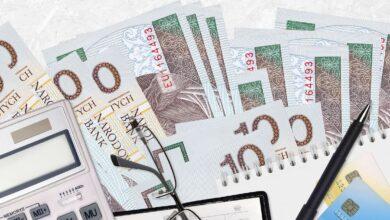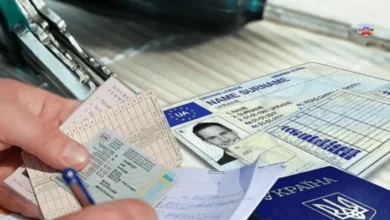Medicines that cannot be imported into the EU: what Ukrainian refugees need to know

For Ukrainian refugees who are forced to leave their homes because of the war and move to the countries of the European Union, the transportation of the necessary medicines becomes an important issue. This especially applies to those who suffer from chronic diseases or need constant medication. At the same time, it is worth remembering that EU countries have their own rules and restrictions regarding the transportation of medical products across borders. To avoid complications, it is important to familiarize yourself with the requirements for transporting medicines in advance and have all the necessary documents with you. This will avoid trouble at the border and ensure uninterrupted treatment.
In order to help Ukrainian refugees, IA “FACT” analyzed in detail the rules for transporting medicines from Ukraine to EU countries, in particular regarding prescription drugs, narcotic and psychotropic substances, as well as general rules for first-aid kits.
General rules for transportation of medicines
When transporting prescription drugs to EU countries, you must have a prescription in English or a doctor’s certificate confirming the need for medication. This is important in order for the border services to be able to confirm the legality of the transportation of these drugs. The best option is an international certificate that confirms that the medicine is necessary for the treatment of a specific disease.
Medicines containing narcotic substances are subject to strict control in the EU and special permits are usually required for their transport. The amount of such drugs should be reasonable – for personal use within a period of up to 30 days. It is also necessary to have medical documents confirming the prescription of drugs that contain narcotic substances.
Medicinal products in the form of sprays and liquids should be transported in their original packaging and the restrictions on the transportation of liquids in hand luggage should be observed – no more than 100 ml in each bottle.
What medicines are prohibited to import into the EU
Medicines containing narcotic or psychotropic substances are strictly controlled by EU countries. These drugs include:
- Narcotic drugs: Acetorphine, Bronchocin, Broncholitin, Bufotenin, Ephedrine, Insonovin, Kaffetin, Ketanov, Kodterpin, Methoxytoin, Neo Theophedrine, Nurofen Plus, Sedalgin, Solutan, Theophedrine-H, Terpincode.
- In the EU, it is allowed to transport up to 20 tablets of each of these drugs, but only if there is a prescription, packaging, instructions and a doctor’s stamp.
Also, analgin is sold only by prescription in some EU countries, and is prohibited in others due to its side effects. Medicines containing barbiturates such as valocordine, corvalol and barboval are also banned in many EU countries. If such drugs are vitally necessary, you must have a prescription from a doctor with the international name of the drug and an indication of the duration of treatment.
Psychotropic substances
Medicines containing psychotropic substances can also cause difficulties when crossing the border. Here is a list of such substances with which you should be especially careful:
- A: Allylprodine, Alfentanil, Alfameprodine, Alfamethadol, Alfaprodine, Alfaacetylmethadol, Anileridine, Acetyldihydrocodeine, Acetylmethadol.
- B: Bezitramid, Benzetidine, Betameprodine, Betamethadol, Betaprodine, Betacetylmethadol, Buprenorphine.
- G: Hydrocodone, Hydroxypethidine, Hydromorphinol, Hydromorphone.
- D: Dextromoramide, Dextropropoxyphene, Dihydrocodeine, Dihydromorphine, Dimenoxadol (estocin), Dimeheptanol, Dimethylthiambutene, Dipipanone, Diphenoxylate, Diphenoxin, Diampromide, Diethylthiambutene, Dioxafetyl butyrate.
- E: Ecgonine, ethylmethylthiambuten, ethylmorphine, ethixeridine, etinitazene.
- I: Isomethadone.
- K: Clonitazen, Codeine, Kodoxim, Cocaine.
- L: Levomethorphan, Levomoramide, Levorphanol, Levophenacylmorphan.
- M: Methadone, Methadone intermediate, Metazocin, Methyldesorphine, Methyldihydromorphine, Metopon, Mirofin, Moramide intermediate, Morpheridine, Morphine, Morphine methobromide, Morphine-N-oxide.
- H: Nicodicodine, Nicocodine, Nicomorphine, Noracimethadol, Norcodeine, Norlevorphanol, Normethadone, Normorphine, Norpipanone.
- A: Oxycodone, Oxymorphone.
- P: Pentazocine, Pethidine, Pethidine intermediate A/B/C, Piminodine, Piritramide, Proheptazine, Properidine, Propyram.
- R: Racemethorphan, Racemoramide, Racemorphan, Remifentanil.
- C: Sufentanil.
- T: Thebaine, Tebacone, Tilidin, Tramadol, Trimeperidine.
- F: Fenadoxone, Phenazocine, Fenampromide, Phenomorphan, Fenoperidine, Fentanyl, Folcodin, Furetidine.
You should also be careful with drugs containing psychotropic substances, in particular:
- A: Allobarbital, Alprazolam, Aminorex, Amobarbital, Amfepramon.
- B: Barbital, Benzfetamine, Bromazepam, Brotizolam, Butalbital, Butobarbital.
- A: Vinylbital.
- G: Galazepam, Haloxazole.
- D: Delorazepam, Diazepam.
- E: Estazolam, Ethyl loflazepat, Ethylamphetamine, Etinamate, Ethchlorvinol.
- Q: Zolpidem.
- K: Kamazepam, Katin, Ketazol, Clobaz, Cloxazole, Clonazepam, Clorazepate.
- L: Lefetamine, Loprazole, Lorazep.
- M: Mazindol, Medazepam, Meprobamate, Methylphenobarbital, Midazolam.
- N: Nimetazepam, Nitrazepam, Nordozepam.
- A: Oxazepam.
- P: Pemoline, Pinazepam.
- T: Temazepam, Tofizopam.
- F: Phenazepam, Phenobarbital.
A basic first aid kit for a trip abroad
Most over-the-counter medications can be carried without restriction, but it is recommended that you bring only essential travel supplies, such as pain relievers, cold and food poisoning medications. The first-aid kit should be compact and include only those products that may be really needed during the trip. All medicines must be in their original packaging.
When transporting medicines across the borders of EU countries, it is important to take into account all the rules and restrictions. Special attention should be paid to medicines containing narcotic or psychotropic substances, for which special permits or medical documents are required. Documents prepared in advance and knowledge of the rules for the transportation of medicines will help to avoid troubles at the border and ensure uninterrupted treatment.





